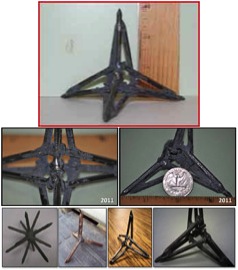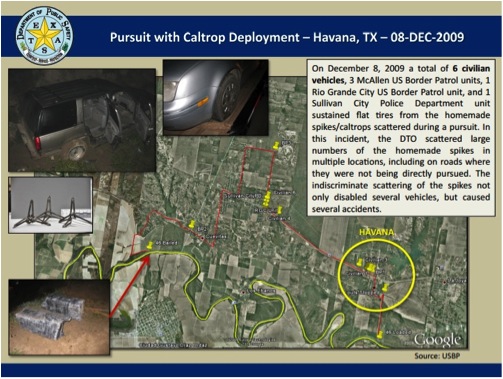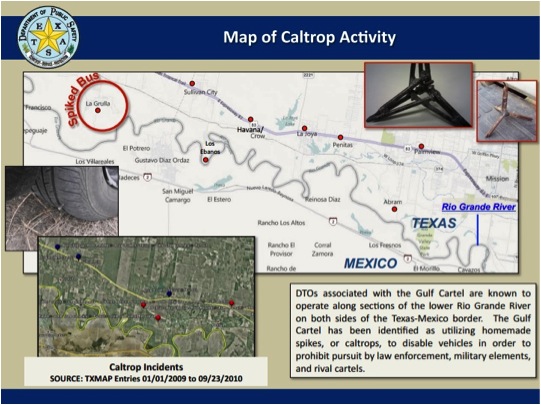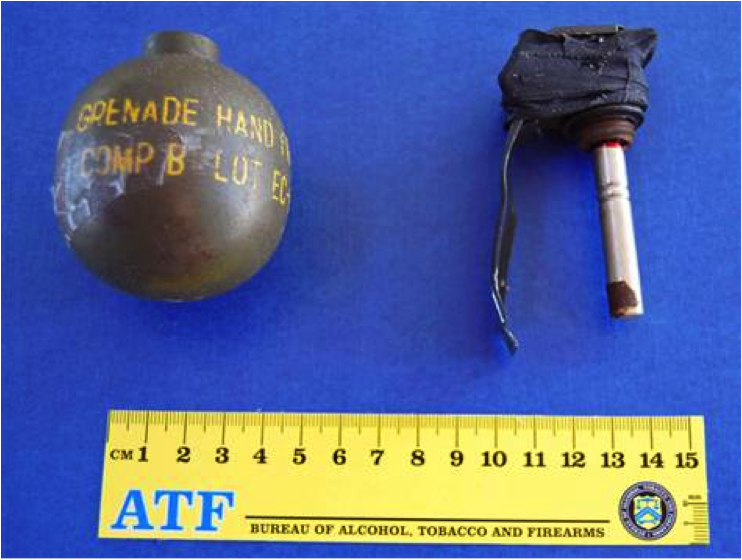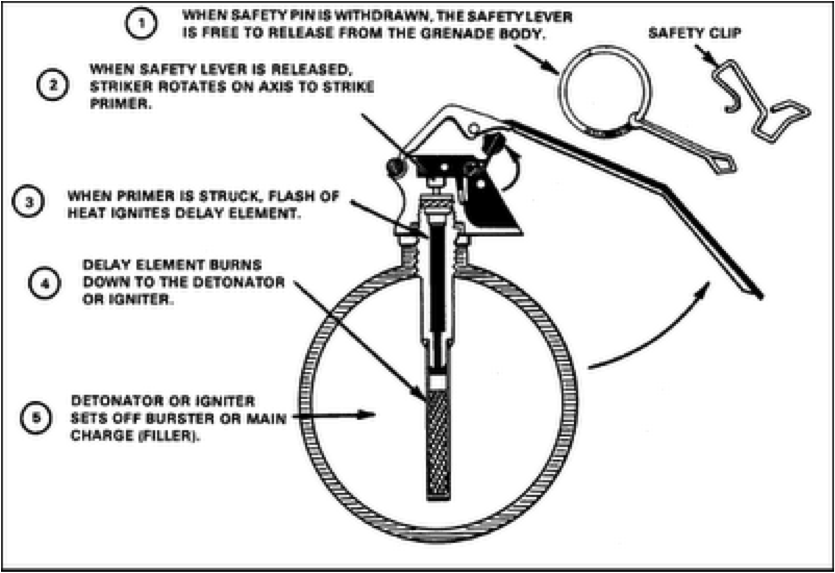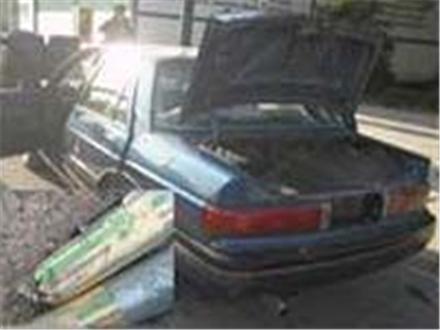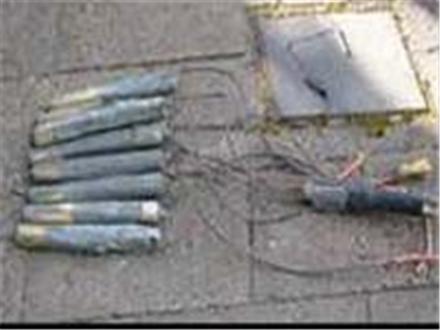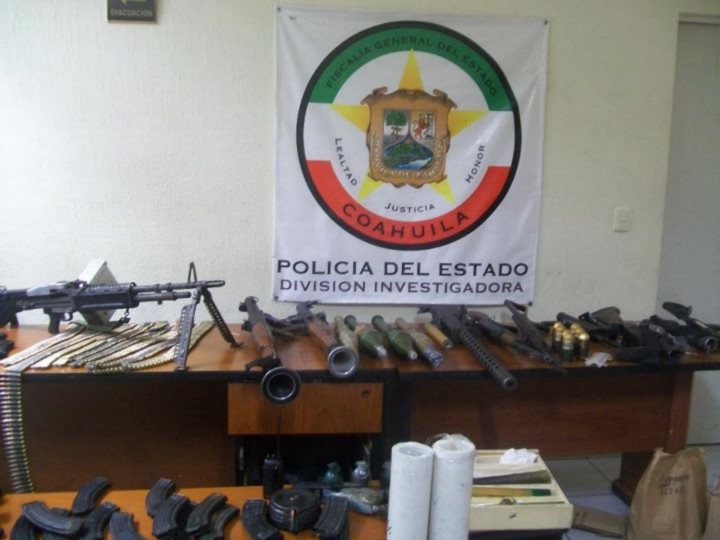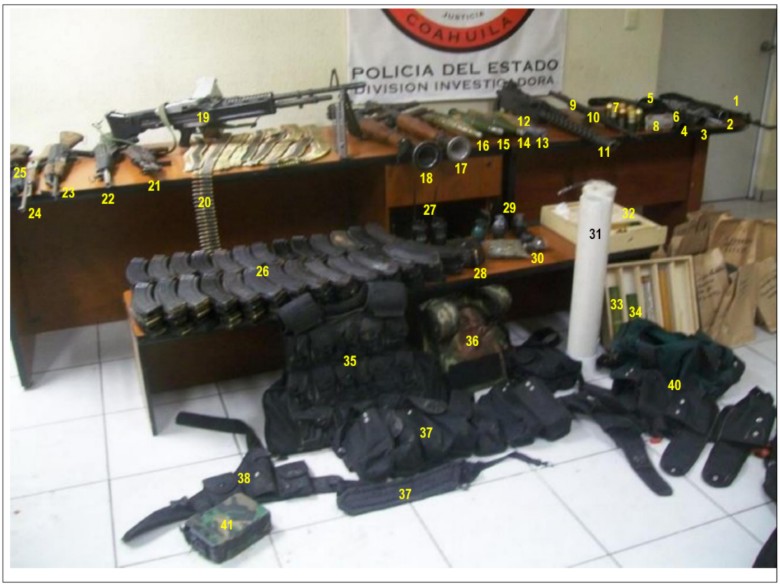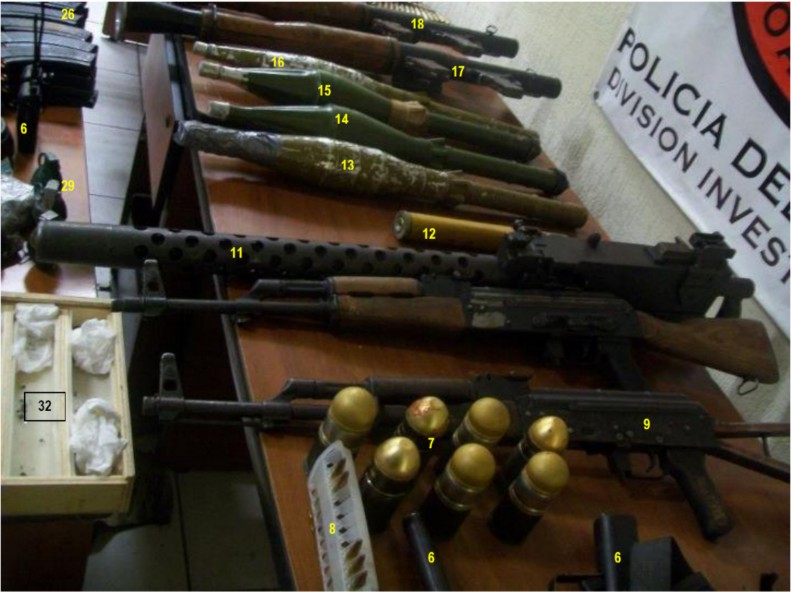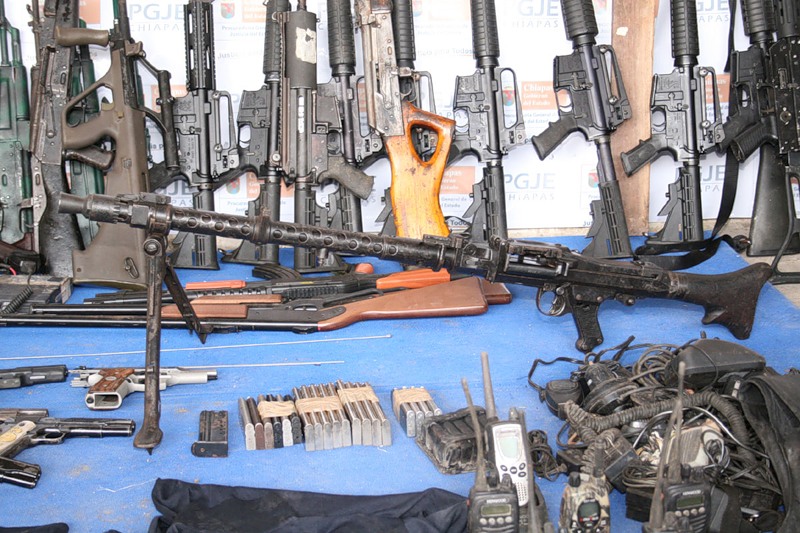Mexican Cartel Tactical Note #12A: Lanzagranadas y Lanzacohetes
Tracking The Sources of Mexican Cartels’ RPG7s
Note : In 2009, the Mexican Government reported that over the previous three years, they had seized 2,804 grenades. Among “the highest quantity” of seized arms were “anti-tank rockets M72 and AT-4, rocket launchers RPG-7, grenade launchers MGL Caliber 37 mm, grenade launcher additional devices caliber 37 and 40 mm, 37 and 40 mm grenades, fragmenting grenades.”
Key Information: Elyssa Pachico, “22 Grenade Launchers Go Missing from Honduras Army Supplies”, Insight Magazine, 08 February 2012
The Honduras security forces have a poor record of keeping track of their armament, feeding suspicions that these stockpiles are an important source of weapons for criminal groups.
http://www.insightcrime.org/insight-latest-news/item/2192-22-grenade-launchers-go-missing-from-honduras-army-supplies
Who : Honduras Special Prosecution Office Against Organized Crime vs corrupt Honduran Army personnel. SGT Luis Alberto Sanchez has been held in an army stockade near the capital since June 2011 on charges connected with the theft .
What : Circa-2010 theft of RPG-7s and rockets from Honduran Army depots indicative of lax security, corruption. The Guatemalan Army currently has approximately 2,200 RPG-7s on it’s books.
When : Investigation opened in February 2012, of theft in mid-2010.
Why : Honduran Military failed to conduct their own investigation in a timely manner, prompting civilian law enforcement to move.
Where : Honduran Army's Comando de Apoyo Logístico de las Fuerzas Armadas (CALFFAA, or logistical support center) at Ocotal, Francisco Morazán.
The Honduran Army had also lost track of an unknown number of M433 40mm grenades and 26 M72 LAWs (four later showing up in Mexico and six in Colombia) prior to April 2008.
If some or all of those 22 Honduran RPGs went North, Guatemala would have been a logical transit point. The Guatemalans security forces have also discovered RPG-7 rocket-propelled grenades, along with .50 caliber heavy machine guns and hand-grenades in Zeta arms caches, which has led to the Guatemalan declaring the Zetas operating out of the city of Coban to be the better-armed force.
While testifying to the United States Senate on March 30, 2012, General Douglas Fraser ( head of the U.S. Southern Command), implied that corrupt military officers in Central America bear most of the responsibility for arming Mexican drug traffickers.
Photo Analysis:
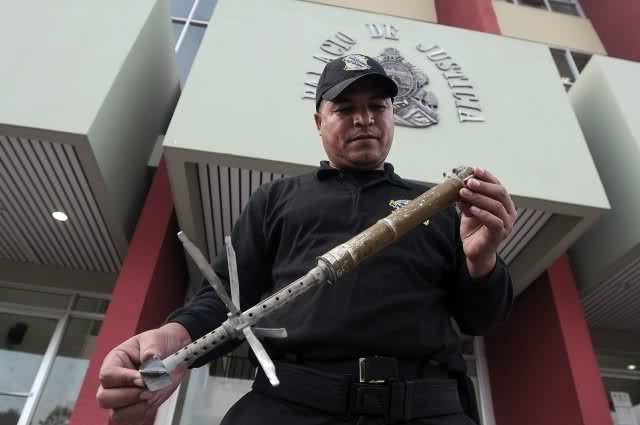
A Honduran policeman displays the remains of an RPG-7 grenade that exploded outside of the Supreme Court building in Tegucigalpa, on 25 November 2009.
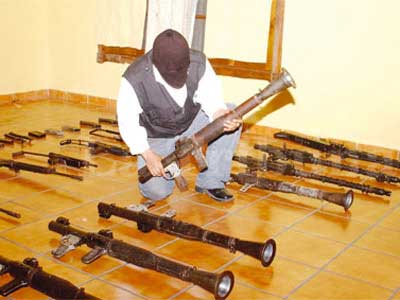
A masked Law Enforcement Officer inspects captured RPG-7s. Note that all four RPGs lack optics and the two MG-34s (sans buttstocks), by his left shin. Photo via Elmundo. See also ‘Mexican Cartel Tactical Notes 11A’. http://smallwarsjournal.com/blog/mexican-cartel-tactical-note-11a
http://elmundo.com.sv/confirman-el-robo-de-22-lanzacohetes-para-rpg7
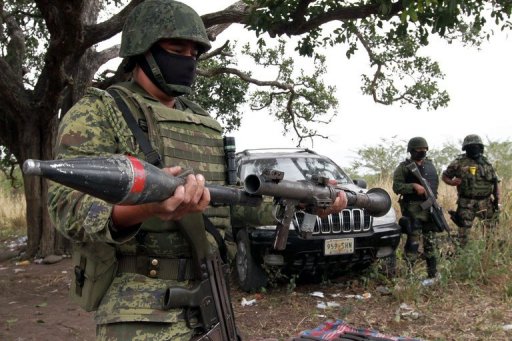
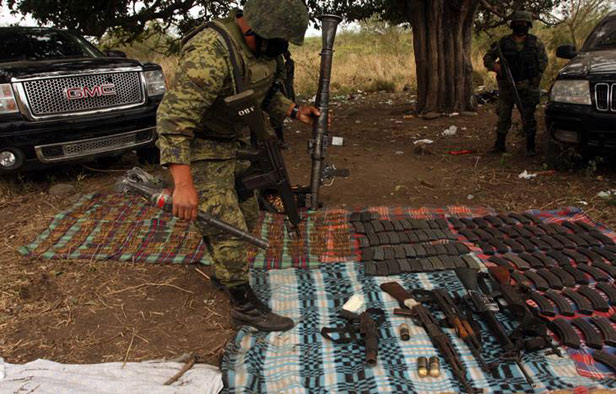
Beat-up RPG-7 launcher and PG-7 rocket confiscated during Mexican Army and Navy operation in "La Antigua", Veracruz, March 2012. Note the lack of optics and missing heat shield.
While only as mechanically sophisticated as a single-action pistol, the RPG’s optics and counter-intuitive flight path through crosswinds requires practice to master beyond point-blank range. Age of and improper storage conditions for the rockets can also negatively affect performance.
Further Reading(s):
Geoffrey Ramsey, “Cable: Honduran Military Supplied Weaponry to Cartels”, Insight Magazine, 25 April 2011
http://www.insightcrime.org/insight-latest-news/item/814-cable-honduran-military-supplied-weaponry-to-cartels
Zetas Guatemala, Insight Magazine, March 02, 2011
http://www.insightcrime.org/criminal-groups/guatemala/zetas/item/628-zetas
RPG-7 Use Throughout Latin America
In addition to weapons stolen from local military depots, ‘legacy weapons’ left over from the Latin and Central American Civil Wars are another likely Cartel source. Since there are no “one way” signs for smugglers, the Mexican Cartels may also tap sources in South America and move them North the same way they move drugs.
The first notable use of the RPG-7 in Latin America was the 1980 assassination of exiled Nicaraguan President Ansatasio Somoza on September 17, 1980. A seven-person Sandinista commando team ambushed his car and killed him near his residence in Paraguay (the first grenade misfired, the second did not).
Over the next decade and a half, guerilla movements in El Salvador, Nicaragua and Guatemala made use of the RPG-7. In 1984/85, Israel supplied the Contras with over a hundred RPG 7s recovered from PLO camps during a 1982 invasion. In a July 1986 memo to CIA Director William Casey, retired Major General John Singlaub discussed a large pending delivery of munitions that included 200 RPG7s. By contrast, exact details on the volume of aid the Soviets supplied their Latin American Allies and friends during the period are far more difficult to pin down.
For instance, a 1986 analysis of 70 tons of munitions seized from rebel caches in Chile revealed that the 114 recently-manufactured RPG7s in mint condition, along with appropriate ancillary equipment, came from Bulgaria. By contrast, a serial number check of the caches’ well-worn M72 LAWs and M16s revealed that they had originally been sent to Vietnam. All of the Chilean cache munitions were suspected of being shipped through Cuba.
In the 1990s, Colombia’s FARC became another customer for RPG7s and Costa Rica a transit point. An RPG-7 and 50 grenades seized in David, Panama by local police in early September 2006 was thought to be related to a shipment of explosives seized the week before in Costa Rica, which originated from Nicaragua and were destined for delivery to FARC (There is also one apocryphal account of a tourist in Costa Rica being offered “an RPG for $75 and rounds for $10 each”).
While these various rebel groups negotiated peace settlements in the early 1990s and supposedly turned in their weapons during disarmament talks, it’s unlikely that the majority went to the smelters. Former guerrillas and downsized soldiers sold or traded excess weapons to Colombia’s FARC, sometimes in barter deals for cocaine.
Possibly some of their caches were forgotten but more likely they were left hidden over the last two decades until cashed-in as a retirement funds. In October, 2011, a farmer digging livestock ponds near Jinotega, Nicaragua uncovered and reported several RPGs (as well 300 AK47s and copious amounts of ammunition).
To help unmask the actual origin of RPGs recovered from Mexican Cartels, local media should be encouraged to photograph the markings and serial numbers.
Significance: Arms Transfer; Cartel TTPs; Cartel Weapons; Cross Border Violence Potentials; SWAT; Urban Combat
Notes: USSOCOM’s General Fraser also pointed out that illicit trafficking by transnational criminal organizations is “expanding between our AOR and the AORs of United States Northern Command, United States Africa Command, and United States European Command, underscoring the truly global nature of this networked threat”.
As the Cartels are becoming more active inside the United States, the most dangerous extrapolation would be proliferation of RPG-7s over the border in the same manner as drugs are smuggled, particularly if the Cartels acquire the more-sophisticated rockets (eg: PG-7VR, PG-7VL, OG-7V, etc ).
The Mexican Army also fields the RPG-29V, known locally as the XGPC-10 and made under license by SEDENA, which when properly handled can be a threat to modern Main Battle Tanks. To date, there have been no open source accounts of these weapons being stolen.
Background Source(s):
Honduran Army Admits Theft of Grenade Launchers, IANS/EFE, February 9, 2012
http://www.laht.com/article.asp?CategoryId=23558&ArticleId=469429
Felix Rivera, ‘About 300 rifles AK, ammunition and launchers discovered’, La Prensa, October 2, 2011
Karl Penhaul, ‘Fear City’, Univision News, September 13, 2011
http://univisionnews.tumblr.com/post/10174024967/fear-city
USA-Mexico Firearms Smuggling, Mexican Federal Government, March 26, 2009
http://www.scribd.com/doc/78384401/01152012
Elmer Enrique Quintero, Decomisan armas de guerra en David, El Siglo, September 16 2006
http://www.panama-guide.com/article.php/20060916171610824
Glenn Garvin, ‘Costa Rica vows effort to stop arms shipments’, Miami Herald, September 15, 2000
http://www.latinamericanstudies.org/costarica/arms.htm
Michael Klare and David Andersen, A SCOURGE OF GUNS : The Diffusion of Small Arms and Light Weapons in Latin America, Federation of American Scientists Arms Sales Monitoring Project , 1996
http://www.fas.org/asmp/library/publications/scourgefl.htm
Analysis of Arms Caches Seized in Chile, August 1986
http://www.fas.org/asmp/campaigns/smallarms/Illicit/Chileaug86.pdf
Jordan Baev , ‘Bulgarian Arms Delivery to Third World Countries, 1950-1989, PHP 27/4/07’, Apr 30, 2007
http://www.ocnus.net/artman/publish/article_28787.shtml
Edward Ulrich , ‘The Astonishing Story of Nicaragua’s Anastasio Somoza’, News of Interest.TV, April 13, 2012
http://www.newsofinterest.tv/politics/book_summaries/anastasio_somoza/index.php
NOTICIAS DE GUATEMALA Weekly Bulletin, August 28 - Sept. 2, 1994
http://groups.google.com/group/misc.activism.progressive/browse_thread/thread/ee7666ce9abb3cfa/29617727dc7dd811%3Fq%3D%2522Jaime%2BMarroquin%2522%2329617727dc7dd811&ei=iGwTS6eaOpW8Qpmqic0O&sa=t&ct=res&cd=3&source=groups&usg=AFQjCNF9ZweCsv8ZIUK8BOomiVl6XDUFEg?pli=1
http://es.wikipedia.org/wiki/Fuerzas_Armadas_de_Guatemala

